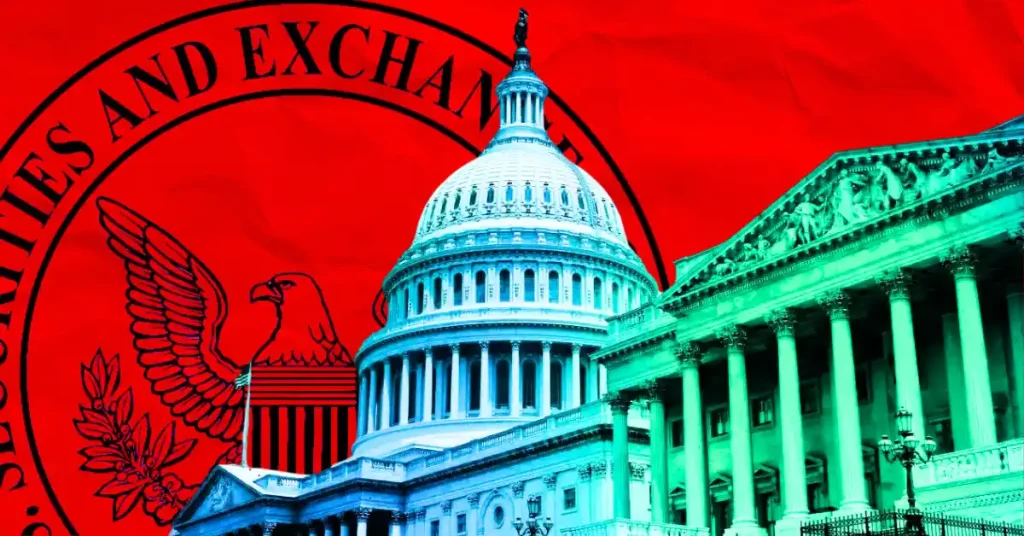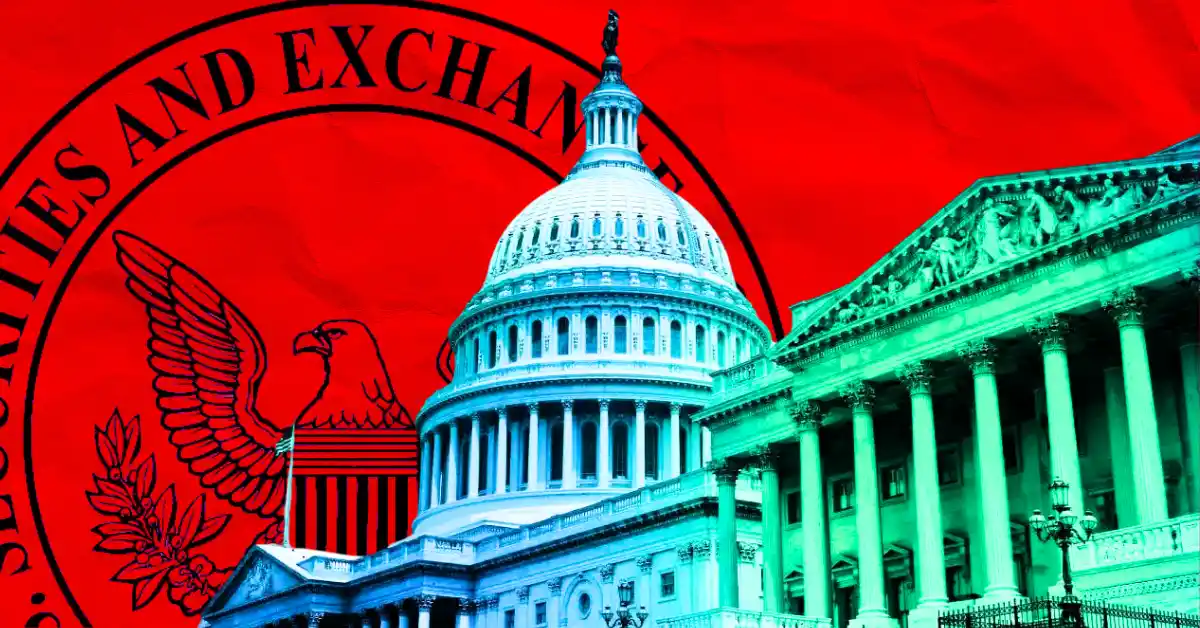
The SEC’s Evolving Stance on Blockchain Securities: A Comprehensive Analysis
Introduction: The Convergence of Tradition and Innovation
The financial world is on the brink of a seismic shift, where the age-old principles of securities meet the cutting-edge capabilities of blockchain technology. Tokenization, the process of converting real-world assets into digital tokens on a blockchain, is poised to revolutionize markets by enhancing efficiency, transparency, and accessibility. However, this transformation is not without its challenges, particularly in navigating the regulatory landscape shaped by the U.S. Securities and Exchange Commission (SEC). Recent developments indicate a cautious yet increasingly open approach by the SEC, signaling a willingness to engage with blockchain leaders and explore pathways for compliant on-chain securities. This report provides an in-depth analysis of the SEC’s evolving perspective, the key players involved, the standards under consideration, and the potential implications for the future of finance.
A Regulatory Awakening: The SEC’s Crypto Task Force
For years, the SEC’s approach to crypto assets has been characterized by a blend of caution and enforcement, primarily focused on ensuring investor protection and preventing fraud. However, the potential of blockchain technology to transform financial markets has not gone unnoticed. The establishment of the SEC’s Crypto Task Force signals a dedicated effort to understand and regulate this emerging landscape. This task force serves as a central point for gathering information, engaging with industry stakeholders, and formulating regulatory strategies.
The Crypto Task Force’s activities demonstrate a clear interest in the tokenization of securities. Roundtable discussions, such as the “Tokenization: Moving Assets Onchain” event, provide a platform for experts to share insights and perspectives on the challenges and opportunities associated with bringing traditional assets onto the blockchain. These dialogues are crucial for the SEC to gain a deeper understanding of the technological nuances and the potential impact on market structure and investor protection.
ERC-3643: A Standard Bearer for Compliant Tokenization
Among the various blockchain initiatives vying for regulatory acceptance, the ERC-3643 standard has emerged as a frontrunner. ERC-3643 is an Ethereum token standard designed specifically for regulated financial instruments. It incorporates built-in compliance features, such as identity verification and transfer restrictions, to ensure that tokenized securities adhere to existing legal and regulatory frameworks.
The ERC-3643 Association, a non-profit organization dedicated to promoting and developing the standard, has been actively engaging with the SEC to educate regulators on its functionalities and potential benefits. These efforts aim to demonstrate that blockchain technology can be used to create securities that are not only more efficient but also more transparent and compliant than traditional securities.
The appeal of ERC-3643 lies in its ability to embed regulatory requirements directly into the token itself. This allows for automated compliance checks, reducing the risk of illicit activity and ensuring that only authorized participants can trade the securities. The SEC’s interest in ERC-3643 suggests a willingness to explore technology-driven solutions for regulatory compliance.
Key Players in the Tokenization Dialogue
The SEC’s exploration of tokenized securities involves a diverse range of stakeholders, including traditional financial institutions, blockchain startups, and industry associations. Nasdaq, a leading stock exchange, has been actively participating in discussions with the SEC, exploring how blockchain technology can be integrated into existing market infrastructure. Their involvement underscores the potential for tokenization to be adopted by established players in the financial industry.
DeFi startups like Plume Network and Etherealize are also contributing to the dialogue, offering innovative solutions for issuing and trading tokenized securities on public blockchains. These companies are pushing the boundaries of what is possible with blockchain technology, demonstrating the potential for decentralized finance to disrupt traditional capital markets.
Industry associations like SIFMA (Securities Industry and Financial Markets Association) play a crucial role in representing the interests of their members and advocating for regulatory frameworks that promote innovation while ensuring investor protection. Their engagement with the SEC helps to bridge the gap between the traditional financial industry and the emerging world of blockchain.
The Promise of Tokenization: Efficiency, Accessibility, and Innovation
The potential benefits of tokenizing securities are numerous and far-reaching. Tokenization can significantly reduce the costs and complexities associated with issuing, trading, and managing securities. By automating processes and eliminating intermediaries, blockchain technology can make financial markets more efficient and accessible to a wider range of investors.
Tokenization can also enhance transparency by providing a tamper-proof record of all transactions on the blockchain. This can help to reduce fraud and increase investor confidence. Furthermore, tokenization can unlock new opportunities for fractional ownership, allowing investors to purchase small portions of high-value assets, such as real estate or fine art.
The SEC’s exploration of tokenized securities is driven by a desire to foster innovation and promote the development of new digital trading methods. By creating a regulatory environment that is conducive to innovation, the SEC hopes to encourage the growth of a vibrant and competitive market for tokenized securities.
Navigating the Regulatory Maze: Challenges and Considerations
While the SEC’s engagement with blockchain leaders is a positive sign, significant challenges remain in establishing a clear and comprehensive regulatory framework for tokenized securities. One of the key challenges is determining how existing securities laws apply to tokenized assets. The SEC has made it clear that tokenized securities are subject to federal securities laws, but the application of these laws to blockchain-based assets can be complex and ambiguous.
Another challenge is addressing the potential risks associated with decentralized finance (DeFi). DeFi platforms offer innovative financial services, but they also pose new risks related to security, governance, and regulatory compliance. The SEC must carefully consider how to regulate DeFi without stifling innovation.
Commissioner Hester Peirce, often referred to as “Crypto Mom,” has emphasized the importance of modernizing old rules to accommodate the unique characteristics of blockchain technology. She has also cautioned against a “one-size-fits-all” approach to regulation, advocating for a flexible and adaptable framework that can evolve with the technology.
A Vision for the Future: Regulatory Sandboxes and Innovation Exemptions
To encourage innovation and experimentation, the SEC is exploring the use of regulatory sandboxes and innovation exemptions. A regulatory sandbox provides a controlled environment for companies to test new products and services without being subject to the full weight of existing regulations. This allows companies to experiment with tokenized securities and other blockchain-based innovations in a safe and compliant manner.
Innovation exemptions provide targeted relief from specific regulatory requirements, allowing companies to develop new business models and technologies that might otherwise be prohibited. These tools can help to foster innovation and promote the growth of the tokenized securities market.
Conclusion: A Measured Embrace of the Tokenized Revolution
The SEC’s evolving stance on tokenized securities reflects a measured yet growing embrace of the potential benefits of blockchain technology. By engaging with industry leaders, exploring innovative standards like ERC-3643, and considering regulatory sandboxes and innovation exemptions, the SEC is laying the groundwork for a future where traditional securities and blockchain technology coexist and complement each other.
The Dawn of a New Financial Era
While challenges remain, the direction is clear: tokenization is poised to transform the financial landscape. The SEC’s role is crucial in ensuring that this transformation occurs in a way that protects investors, promotes innovation, and fosters a fair and efficient market. As the SEC continues to engage with the industry and refine its regulatory approach, the tokenized frontier promises to unlock new opportunities and reshape the future of finance.





